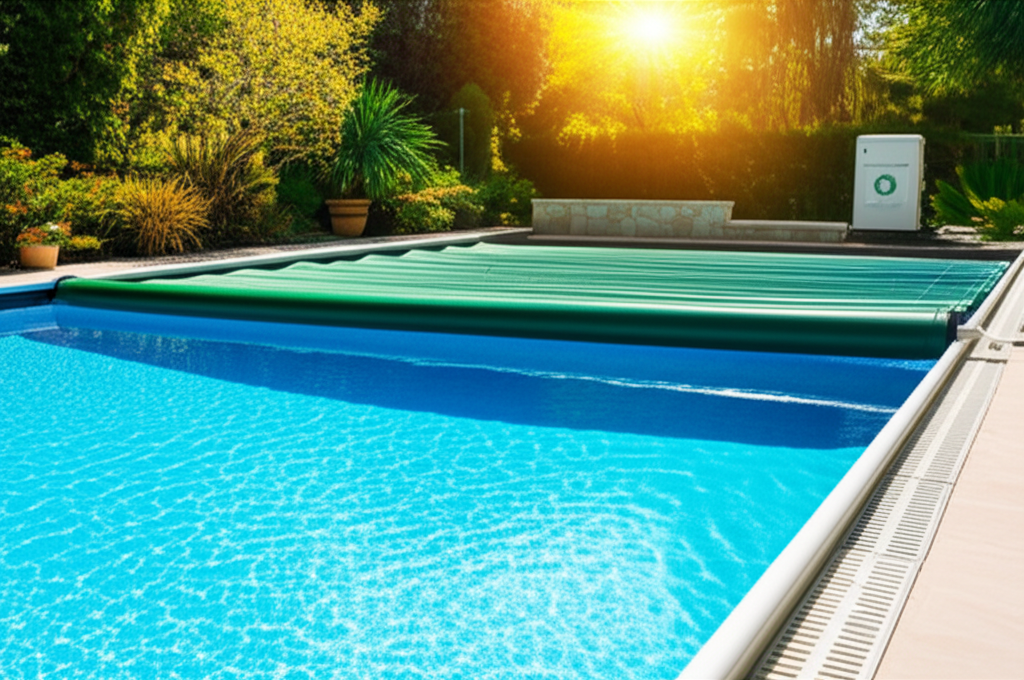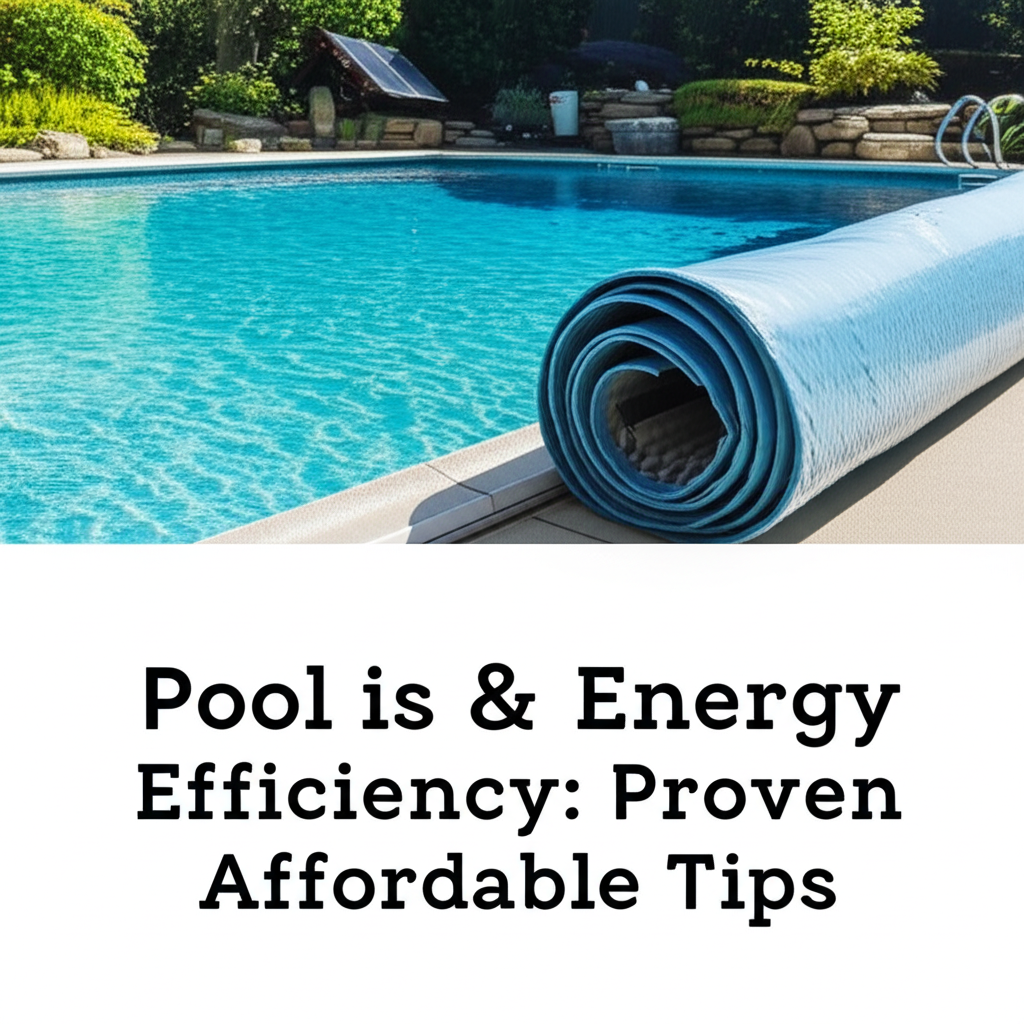Pool Energy Efficiency: Proven & Affordable Tips for a Smarter Swim
Pool energy efficiency is a topic of growing interest for homeowners looking to enjoy their swimming oasis without bracing for astronomical utility bills. A swimming pool, while a source of immense enjoyment, can also be a significant energy consumer, with pumps, heaters, and lighting working hard to maintain its pristine condition. The good news is that achieving a more energy-efficient pool doesn’t require sacrificing comfort or breaking the bank. With a mix of smart practices and strategic upgrades, you can significantly reduce your pool’s operational costs and environmental footprint.
Understanding Your Pool’s Energy Hogs
Before diving into solutions, it’s helpful to understand where your pool’s energy goes. Primarily, the largest culprits are:
1. The Pump: This is often the biggest energy sink, responsible for circulating water, filtering out debris, and chemical distribution.
2. The Heater: If you heat your pool, this unit can consume a substantial amount of energy, especially during cooler months or if set to a high temperature.
3. Lighting: While seemingly minor, inefficient incandescent lights can add up, particularly if left on for extended periods.
Addressing these areas with targeted strategies will yield the most impactful savings.
Core Strategies for Boosting Pool Energy Efficiency
Implementing a few key changes can dramatically improve your pool’s energy consumption.
Optimize Your Pool Pump – The Powerhouse of Pool Energy Efficiency
Your pool pump is the heart of your circulation system, and also its biggest energy draw. Making it more efficient is paramount.
Invest in a Variable Speed Pump (VSP): This is arguably the single most effective upgrade for pool energy efficiency. Unlike single-speed pumps that run at one relentless speed, VSPs can be programmed to operate at various speeds, matching the task at hand. Filtering requires a lower speed and less energy than, say, backwashing. While the initial investment is higher, VSPs typically pay for themselves within 1-3 years through energy savings, often cutting pump-related electricity costs by 75-90%.
Adjust Filter Run Times: Many pool owners run their pumps for far longer than necessary. Work with a pool professional to determine the optimal run time (usually 6-8 hours per day) for your specific pool size and equipment. Running it less doesn’t mean a dirtier pool if your filtration is effective. Consider running your pump during off-peak electricity hours if your utility offers time-of-use rates.
Maintain Clean Filters: A dirty filter forces your pump to work harder, consuming more energy. Regularly clean or backwash your filter according to manufacturer recommendations to ensure optimal water flow and efficiency.
Heating Smarter, Not Harder
If you enjoy a warm pool, you know the heater can be a budget drain. Here’s how to curb those costs:
Strategic Use of a Solar Pool Cover: This is one of the most affordable and effective ways to boost pool energy efficiency. A solar cover (or liquid solar blanket) helps retain heat overnight and prevents up to 70% of heat loss due to evaporation, which is the primary form of heat loss. It also helps warm the pool during sunny days. When not in use, a good quality solar cover should be stored properly to maintain its integrity.
Lower the Thermostat: Even reducing your pool temperature by just 1 or 2 degrees Fahrenheit can lead to significant energy savings over the course of a swimming season without a noticeable difference in comfort.
Consider a Heat Pump or Solar Heater: While a larger initial investment, both heat pumps and dedicated solar heating systems are far more energy-efficient than traditional gas heaters. Heat pumps transfer heat from the air to your pool water, making them incredibly efficient, while solar heaters use the sun’s free energy directly. These options offer substantial long-term savings.
Utilize Windbreaks: Wind can dramatically increase heat loss from your pool’s surface. Planting hedges, installing a fence, or using strategically placed landscaping can act as a windbreak, reducing evaporation and heat loss.
Illuminate with Intelligence
Your pool lighting doesn’t have to be an energy vampire.
Switch to LED Lighting: Replacing old incandescent bulbs with energy-efficient LED lights can reduce lighting energy consumption by up to 80-90%. LEDs also last significantly longer, reducing maintenance and replacement costs.
Use Timers: Program your pool lights to turn on only when needed and for specified durations. This prevents them from being accidentally left on overnight or during daylight hours.
Affordable & Immediate Actions for Optimal Pool Energy Efficiency
Many of the most impactful changes can be implemented quickly and don’t require major overhauls.
Regular Cleaning: Keep your skimmer baskets and pump strainer basket clear of debris. Clogged baskets restrict water flow, forcing your pump to work harder and consume more energy.
Check for Leaks: Even small leaks can waste significant amounts of water, and if your pump is running to compensate, it’s also wasting energy. Promptly repair any leaks.
Proper Water Chemistry: Balanced water chemistry not only keeps your pool sparkling but also helps your filter and pump perform optimally. Imbalanced water can lead to issues that make your equipment work harder.
* Calibrate Your Equipment: Ensure your pool timer and thermostat are accurately set and functioning correctly. A malfunctioning thermostat could lead to your heater running unnecessarily.
Beyond the Basics: Automation and Sizing
For those looking for ultimate control and efficiency, consider a pool automation system. These systems allow you to control pumps, heaters, lights, and sanitation from a single interface, often a smartphone app, optimizing schedules and energy usage with precision. Furthermore, when replacing equipment, always ensure it is correctly sized for your pool. Oversized pumps or heaters will consume more energy than necessary, while undersized equipment will struggle to keep up, leading to inefficiency.
Conclusion
Achieving excellent pool energy efficiency is a journey of smart choices and continuous maintenance. By understanding where your energy goes and implementing these proven and affordable tips – from upgrading to a variable speed pump to simply using a solar cover and cleaning your filters – you can drastically reduce your pool’s operating costs. Not only will you save money, but you’ll also contribute to a greener planet, ensuring your swimming pool remains a source of joy for years to come, without the financial headache.



